18 pieces of cold knowledge about coffee eleven ways to identify coffee
A cup of coffee will lose 70% of its flavor in 2 minutes, and the following knowledge is definitely enough for you to hold your eyebrows for 2 minutes.
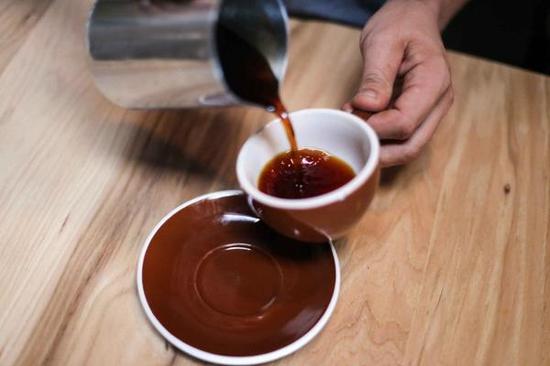
Coffee
Coffee is one of the most popular drinks in the world. Although it is very popular, many people don't know it very well. Here are 19 little secrets behind coffee. You'll know where it comes from, how much water it takes to grow a pound of coffee, and the past life of Kopi Luwak.
18 pieces of cold knowledge about coffee
1) Coffee is said to have been discovered by shepherds
The most widespread story is that an Ethiopian shepherd named Kaldi found his animal excited after eating ripe coffee beans.
2) the name Mocha comes from the Yemeni port of Mocha.
Muha is the first port city in the world to export coffee beans to the world. It is said that Yemeni coffee beans have the quality of chocolate, which makes coffee containing chocolate now called mocha.
3) two major coffee varieties: Arabica and Robusta

Coffee variety
Robusta is more productive, more resistant to disease and higher in caffeine. Arabica has higher lipids and nearly twice as much sugar as Robusta, so it has more acidity and more complex flavors. Cheap coffee is more likely to use Robusta, while boutique coffee uses Arabica. There is also a more detailed classification of these two types of coffee. The two main varieties of Arabica are bourbon coffee (Bourbon) and Typica coffee.
4) Coffee trees need a lot of water
People always talk about how much water it takes to produce beef, but according to FoodBev.com, it takes 1800 gallons (6814 liters) of water for a pound of beef and 2500 gallons (9464 liters) for a pound of coffee.
5) Coffee beans can be classified by color
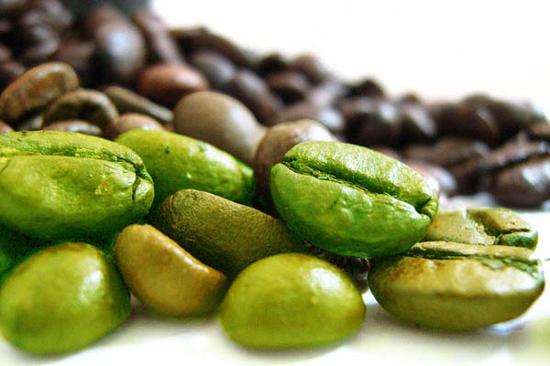
Coffee beans can be classified by color
It is green at first, and when they begin to mature, different colors will turn yellow, orange or red.
6) thousands of precious species unique to Ethiopia
The coffee we drink comes from several different kinds, but there are thousands of different varieties of coffee in the forests of Ethiopia, none of which have been grown on a large scale.
7) A coffee tree can live for more than 200 years
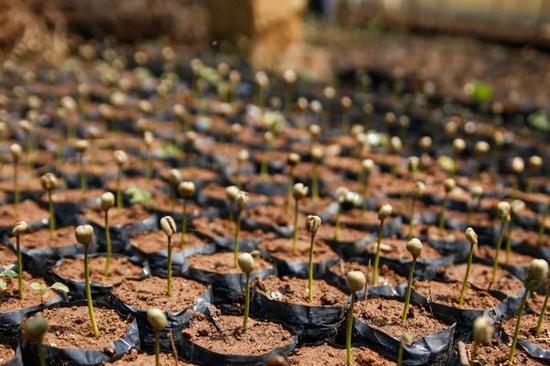
A coffee tree can live for more than 200 years.
When it begins to sprout, the top buds are very lovely, but eventually grow into dense plants and survive for two centuries.
8) roasters often buy coffee reserves for one year at a time
Coffee growers usually pick coffee once a year (some twice a year), so roasters buy coffee reserves for a year at a time, usually through special storage techniques to keep the coffee fresh. Although green coffee beans are kept in the warehouse for months, they are usually taken out of the warehouse on the day of baking.
9) Kopi Luwak is true
Asian raccoons are known to eat wild coffee fruits. The coffee fruit is fermented in their digestive tract and then excreted. It is generally believed that this process gives coffee an incredible flavor, but the limited quantity makes them very expensive.
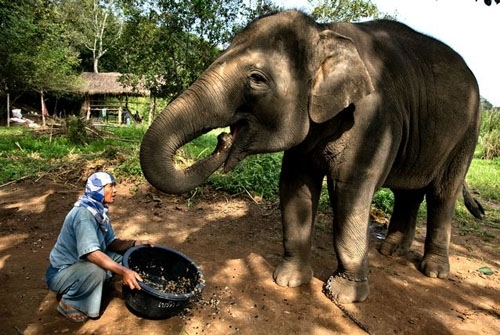
Black ivory coffee
If you don't think this is rare, elephants are doing the same thing in a reserve in Thailand: black ivory coffee (Black Ivory Coffee).
10) the United States is the largest coffee consumer in the world
The first place is the United States, and Germany is the second.
You can drink the best coffee in the world at a very low price
Coffee is really special in the commodity, because even the most expensive coffee becomes very cheap to take home and brew. Maybe Bill Gates drinks more expensive wine than you do, but you can drink the same coffee as the richest man in the world!
12) when the appraiser tastes the coffee, he always takes a big drink.
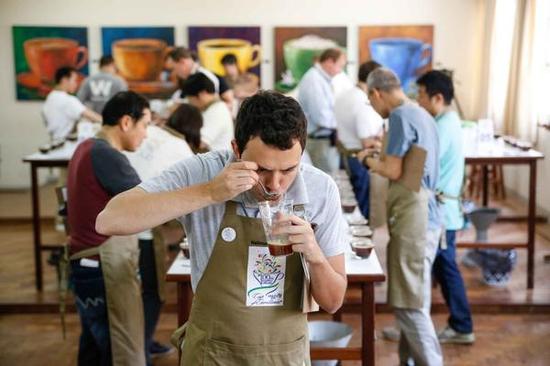
When the appraiser tastes the coffee, he takes a big gulp.
In order to have a comprehensive understanding of the flavor of coffee, appraisers will drink coffee and let it flow through the whole mouth, because different parts of the mouth have different sensitivity to different tastes. The tongue corresponds to sweetness and bitterness at the back of the throat.
13) there are technical terms for coffee flavor
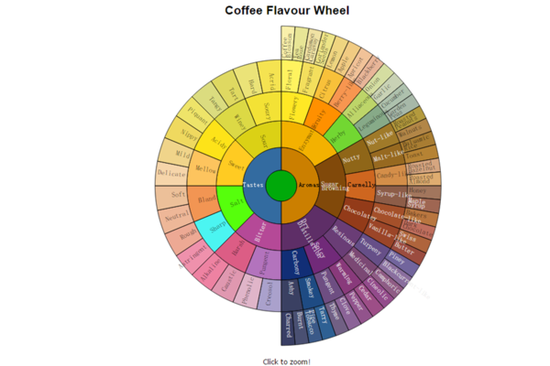
There is a technical term for coffee flavor.
The American Fine Coffee Association (Specialty Coffee Association of America) has created a flavor wheel (flavor wheel) for bakers to assess the features and shortcomings of boutique coffee, including positive comments such as "apricot flavor" or "roasted chocolate flavor" and negative reviews such as "hardening" or "straw flavor".
14) Coffee has more flavor than wine
There are about 1500 aroma characteristics of coffee, while only 200 are found in red wine.
15) the word Espresso does not mean fast
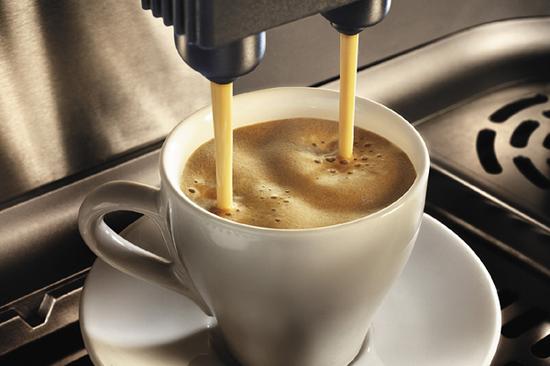
Espresso (Italian espresso)
The word comes from Latin, which means "put." Squeeze it out. And don't pronounce it with an "X" unless you want to annoy the coffee maker.
16) Espresso contains less caffeine than freshly brewed coffee
People at Coffee Chemistry analyzed the data: the amount of caffeine in an 80-ounce (236.6 ml) cup of coffee is about 2.3 times that of a 1-ounce cup of Espresso. Espresso has more caffeine per unit volume, but a smaller volume means you can be less excited.
17) Grinding is a necessary part of making coffee
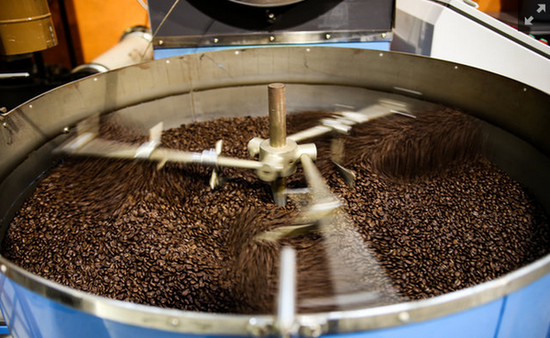
Grinding is a necessary step in making coffee
Picked coffee beans will quickly deteriorate, so if you want to make a cup of coffee as strong as possible, buy the beans and grind them at home. Coffee shops often spend thousands of dollars on grinders to ensure correct, accurate and highly adjustable grinding granularity.
18) Coffee loses 70% of its flavor in two minutes
According to the standards of official coffee experts, the coffee will change after 15 minutes.
Finally, I would like to present a coffee tasting method for all of you:
Eleven ways to identify coffee
The trap of 100% pure coffee. This is the most obvious hint, because "100% pure coffee" does not indicate quality, but only means the use of high-profit, better anti-parasite Robusta coffee beans of low quality. This kind of coffee tastes more bitter.
The shelf life is much more important than the "baking" time. Don't just think about judging the freshness of coffee by the date of baking, regardless of the expiration date must be an unwise choice.
There are a variety of flavors. If a brand produces a variety of flavors of handmade coffee, they must not pay attention to the quality of coffee beans. This is not to say that a professional baker can't make two or three flavors (Klatch is a good example), but when you have a lot of choices, your chances of finding a good cup of coffee are greatly reduced.
Over-reliance on blended coffee. A common cost-cutting technique is to buy low-grade coffee beans and mix them. If a company sells 10 kinds of coffee, eight of which are blended coffee, they must not be trusted.
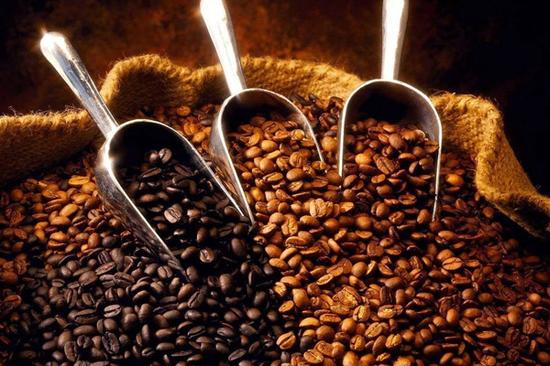
Roast coffee
Baking grade. Most professional coffee roasters don't use words like bright, medium, or dark to describe roasting grades. They describe them as exaggerated synaesthesia, such as earthy or chocolate-colored coffee beans. If you don't see a word for flavor, it's likely that the coffee bean baker is unprofessional. This is by no means a good sign.
Cups or cans. Dehydrated coffee is usually bottled in glass, but it may also be packed in cans and plastics. None of this is environmentally friendly: more carbon dioxide is produced in both production and transportation. There is also a problem with transparent bags, because light is the main natural enemy of coffee beans, and darkness is their old friend.
There is too much coffee in stock. Unless you are buying coffee for the army or office, buy less than 2 pounds at a time. Because it deteriorates over time, and the most famous bakers don't want their products to stay on the shelf for a few weeks.
A buzzword. Natural, pure and eco-friendly sounds great, but it doesn't carry much weight. Look for USDA organic certification or Fair Trade certification stickers-many good coffees don't have these certifications, but beware of the traps behind the fancy words. The really useful information is the altitude of growth, the description of processing and the type of variety.
We don't sell whole bean coffee. If a brand does not sell whole bean coffee, it is not a good sign.
Coffee is sold in boxes. If it is not properly packaged, it is likely to be of poor quality, as it shows that the coffee does not pay attention to quality assurance and freshness, and the coffee will deteriorate quickly when exposed to light and air.
Lack of characteristics of origin. Countries like Colombia and Guatemala are not small. They have many kinds of coffee. Listing farms and regions can stimulate purchasing confidence, and vice versa.
Important Notice :
前街咖啡 FrontStreet Coffee has moved to new addredd:
FrontStreet Coffee Address: 315,Donghua East Road,GuangZhou
Tel:020 38364473
- Prev

The world is so big that I want to spend a cup of coffee with strangers.
Are you willing to be alone with a stranger? Table for two (table for two) is a small restaurant on Seventh Avenue in New York specially designed for strangers. One table, two chairs, one inside the wall and one outside the wall. Anyone has a chance to invite a stranger to spend time with a cup of coffee and a cup of wine. French Parisian artist Shani
- Next
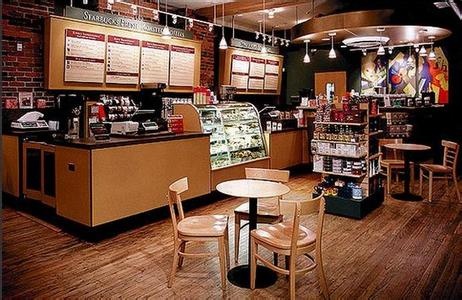
To open a coffee shop and start a business, you have to do these seven things.
I really want to open a small shop of my own. I envy you having your own cafe! These are the words I have heard most in the two and a half years since I opened the shop. But if you can not do the following seven, do not easily open a shop: 1. Pay attention to the things operated by the store very much. I use love, not ordinary love. Because the store is faced with a lot of setbacks and complexity.
Related
- Being chased out of the rain in front of Starbucks?! Store: Sheltering from rain under umbrellas poses a safety hazard
- The white moonlight has changed?! Lucky launches "Big Winter Pear American"
- Hand-brewed coffee three-stage method, high-sweet and universal brewing method to share! What does the high sweet water level of hand-brewed coffee mean?
- What is the difference between raw, refined and full espresso coffee? How to extract espresso and taste good?
- A complete list of coffee bean names and their meanings! What is Yejia Shefi coffee? Where is Mantelin coffee?
- What grade does Arida Manor Kaduai coffee beans belong to? What treatment is Arida ASD slow anaerobic sun exposure?
- The milk tea cup becomes smaller?! Overlord Tea Girl launches a new "Return to Yunnan" series
- Accused of selling counterfeit and high-priced coffee beans! Well-known boutique coffee brand "Oukelao" bowed and apologized!
- How to make espresso dumplings? Can I eat coffee and glutinous rice balls together?
- Save the unformed and stagnant powder cakes in one second! What is the problem with stagnant water in the powder bowl of the espresso machine?

